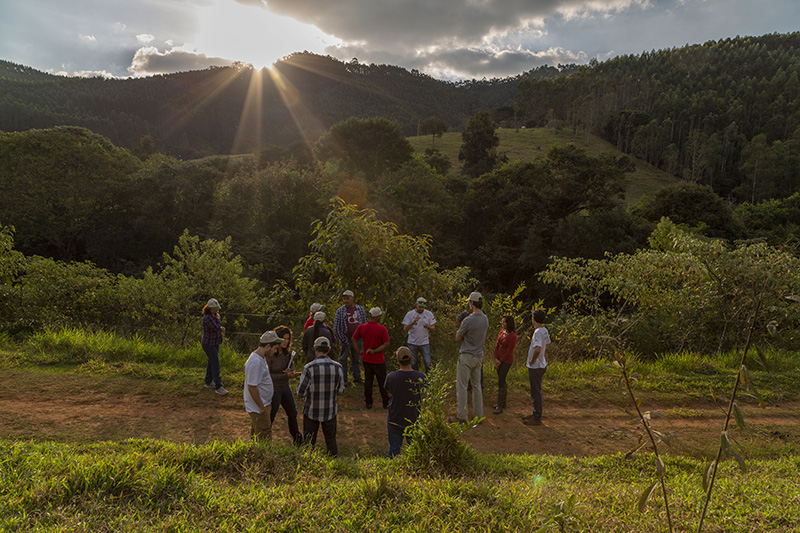Forest Restoration
Planting trees is central to the conservation of the Cantareira System

Rural producers visit a reforested area near the spring on a rural property in Piracaia (SP)
Photo by Cibele Quirino/Sowing Water Project
Cultivating Atlantic Forest native trees in the Cantareira System is not a matter of choice but a necessity. Just in the surroundings of springs, water courses, and reservoirs, there is a deficit of 35 million trees considering what should be there by law. These lands close to the water are known as Permanent Preservation Areas for water. In the Cantareira System, deforestation is present in about 60% of these areas, equivalent to 21 thousand soccer fields.
Filling these areas with native Atlantic Forest tree species means contributing to the enhancement of the resilience of the Cantareira System. The Project’s team closely monitors the plantations of Sowing Water for at least two years. From that moment on, the new forest can withstand adversities, such as ant attacks and periods of prolonged drought.
Discover the benefits of forest restoration:
- Decompression of the soil by the action of the roots
- Increase of organic matter in the soil
- Increased infiltration of rainwater
- A higher amount of nutrients in the soil
- Temperature decrease
- Recovery of degraded areas
- The formation of ecological corridors is essential for the genetic exchange of flora and fauna
- CO2 Sequestration
Participate in the Cantareira Protector Campaign and enlarge the forest area in the region.

